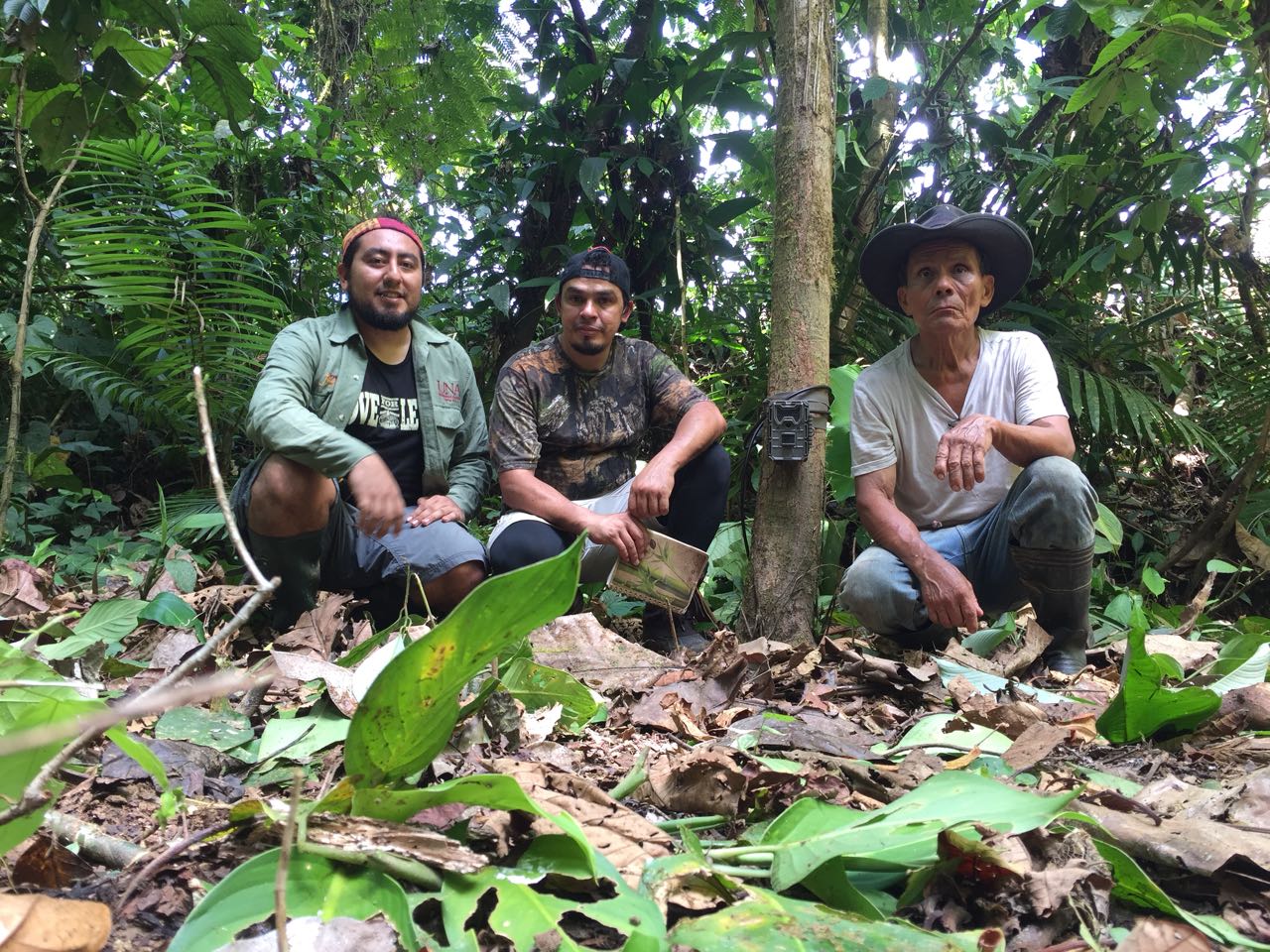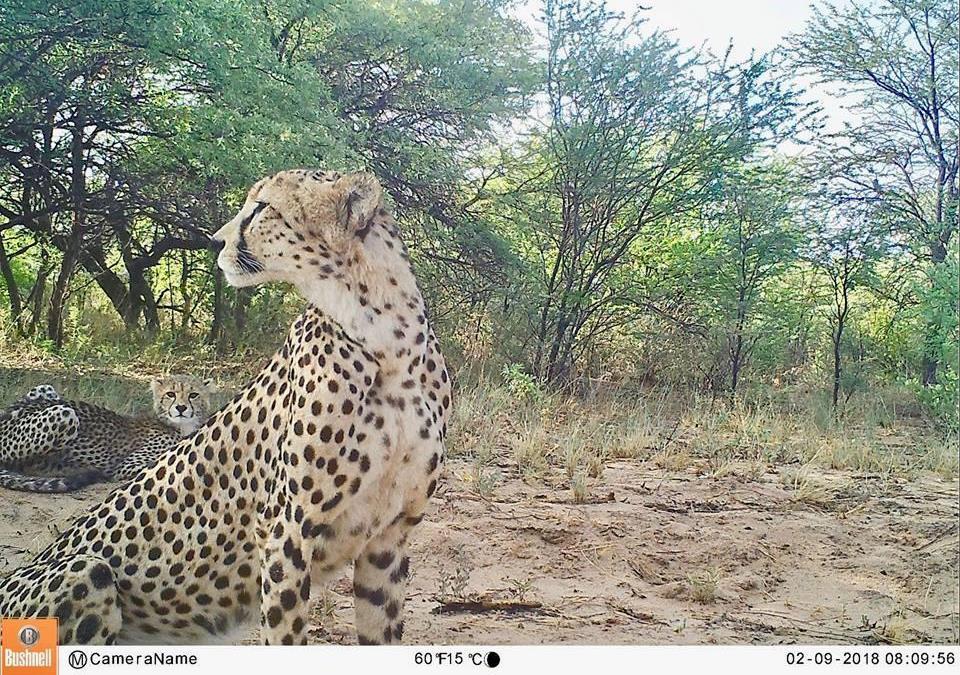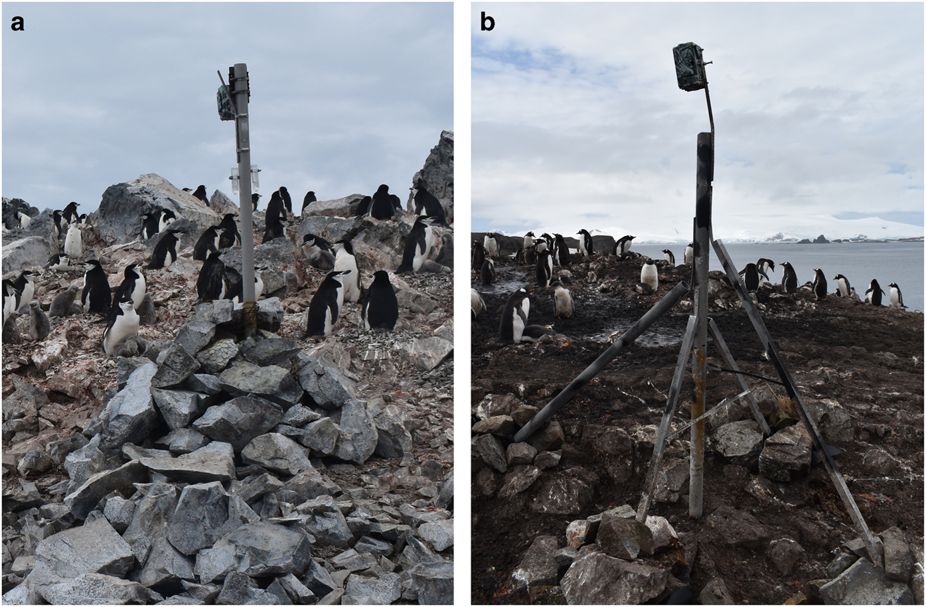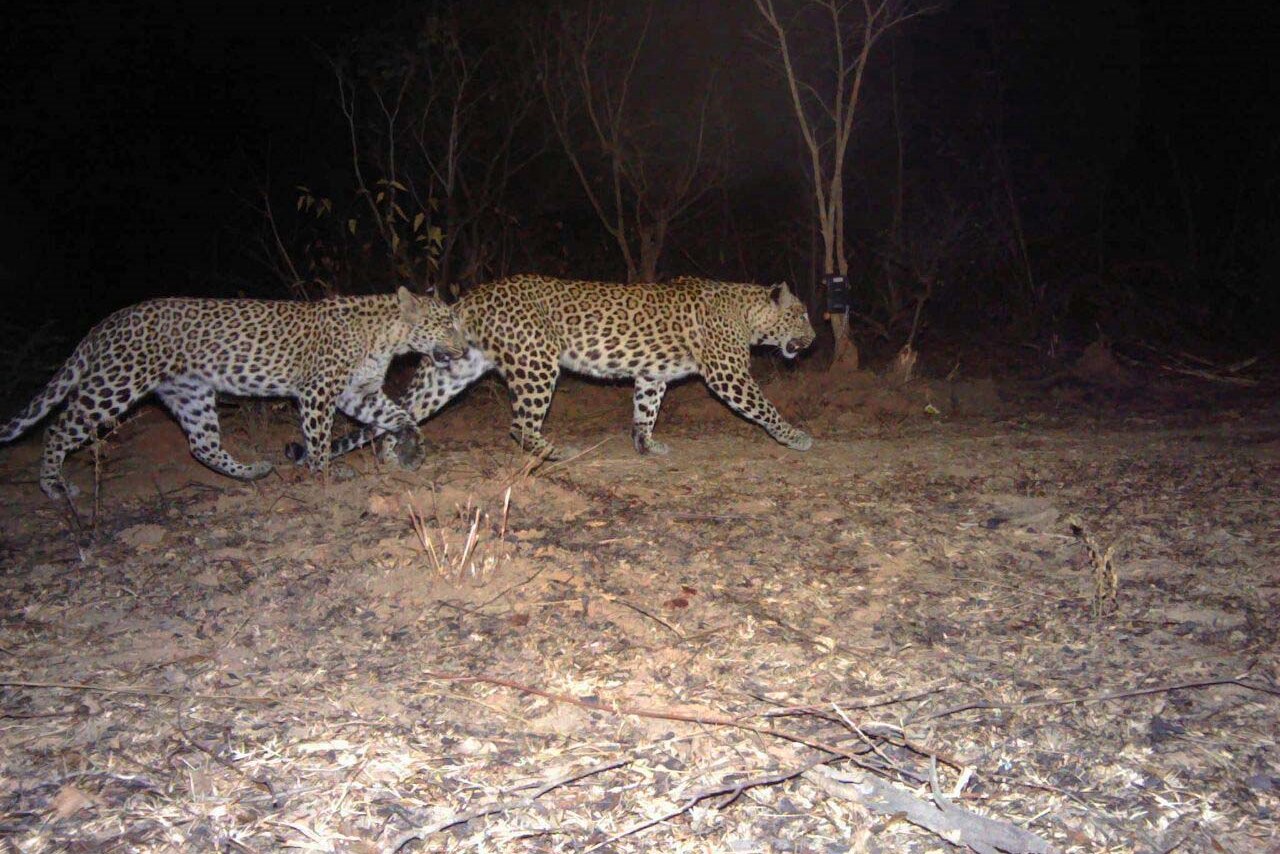- Camera traps, remotely installed cameras triggered by motion or heat of a passing person or animal, have helped research projects document the occurrence of species, photograph cryptic and nocturnal animals, or describe a vertebrate community in a given area.
- Camera trapping studies are addressing new research and management questions, including document rare events, assess population dynamics, detect poachers, and involve rural landowners in monitoring.
- And with projects generating ever-larger image data sets, they are using volunteers and, more recently, artificial intelligence to analyse the information.
Everyone loves camera trap photos. Remotely installed cameras triggered by motion or heat of a passing person or animal, have helped research projects document the occurrence of species or describe a vertebrate community in a given area. Their remoteness allows camera traps to photograph shy, cryptic, or nocturnal species, the presence of which would otherwise be difficult to confirm.

For example, camera traps installed to document and monitor species in several lesser-known nature reserves have captured the first spotted hyena in a Gabonese national park in 20 years; confirmed discovery of lowland bongo in Uganda for first time; and various large mammals and rare birds in a biological reserve in Ecuador.
This review of camera trapping stories we covered in 2018 shows that camera trapping studies are addressing new research and management questions, including document rare events, assess population dynamics, detect poachers, and involve rural landowners in monitoring. And with projects generating ever-larger image data sets, in some cases with millions of images, they are using volunteers and, more recently, artificial intelligence to analyse the information.

For elusive Javan rhinos, camera traps are a benevolent Big Brother
Camera traps in an Indonesian park have recorded the first ever video of Javan rhinos (Rhinoceros sondaicus) mating in the wild. The critically endangered species, with an estimated population of just 68 individuals, is notoriously elusive, evading even the conservationists and rangers responsible for studying and protecting it. The species’ gestation period is 16 to 19 months, so if the birth is successful, the new baby should be born in the first half of 2019.
The network of 120 camera traps, introduced in 2010, has given researchers and park officials valuable insights into the rhinos’ biology and behavior, and helped inform conservation strategies for the species.

Cameras reveal spectacled bear’s home in Peru’s dry forests
An Andean spectacled bear (Tremarctos ornatus) named Laura and about 50 other bears monitored for 10 years by the Spectacled Bear Conservation Peru (SBC) inhabit a dry forest ecosystem that ranges from 150 meters to 1,000 meters above sea level, lower than any other part of the bear’s distribution. The unique dry forest ecosystem offers greater visibility than cloud forests, where the bears typically live.
The scientists use the bears’ unique facial markings to identify them in the photographs taken by the camera traps and track their movement patterns.
They discovered that the bears in this population use higher altitudes in winter but move back down to the lower areas to feed on the sapote tree (Colicodendrum scabrida). Protection of the sapote is thus important for the survival of the bears; the lower elevations where the tree grows faces heavy pressure from forest fragmentation and land trafficking.
The researchers placed camera traps at a few small water sources in the area where bears consistently returned to drink water, mark their territory, and check the state of fertility of nearby females.
Cross-border camera trap research puts wild Amur leopard number at 84
Scientists working in Russia and China used camera traps to estimate that 84 Amur leopards remain in the wild.
Previous studies tracked the cats using their footprints in snow, but the camera trap photographs allowed the researchers to identify individual animals by their unique spot patterns.

The team found that 20 percent of the Amur leopards appeared on both sides of the border between China and Russia, highlighting the importance of cross-border collaboration. Scientists recognize this area as likely the last place on Earth where this critically endangered leopard subspecies (Panthera pardus orientalis) lives. That fact makes collaborations of this type, which included biologists from Chinese, Russian and U.S. institutions, critical to learning more about an elusive animal.
The Osa Camera Trap Network: Uniting people to monitor biodiversity
Top predators and other wide-ranging species move across large areas, which makes their populations difficult to assess by a single camera-trapping project.
The Osa Camera Trap Network monitors big cats and their prey on public and private lands across Costa Rica’s Osa Peninsula. Concern about connectivity for top predators to disperse encouraged the participation of a diverse group of stakeholders, who have broadened the scale of the project.

Research groups, protected area managers, universities, ecotourism providers, and local communities have set out cameras to learn which animals were passing through their land. The network encourages members to participate in and feel ownership of the data collection and the wildlife they document.
Clear communication, together with a few photos of resident jaguars, have encouraged the network’s 23 members to maintain more than 200 cameras across the region.
Integrating a diverse group of stakeholders in regionwide biological monitoring has helped to provide baseline data for long-term monitoring of the area’s mammals, connect people with wildlife, empower rural residents, and ensure the monitoring project’s longevity.

Speed trap: Cameras help defuse human-cheetah conflict in Botswana
Camera traps have helped researchers in Botswanan farmland to monitor cheetahs and other predators without habituating them to human presence, a key feature where farmers shoot carnivores preventatively to protect their livestock.
Cheetahs are thought to cause the biggest economic losses to game ranches in the country. They tend to hunt during the day and, with much of their habitat lost to private farmland, the cats live close to farmers, who blame them even for livestock kills they didn’t make.
Sharing camera-trap data on cheetahs’ individual spot patterns, territorial behavior and long-distance travel has helped show farmers there may be far fewer individuals than they realize — “the cheetah seen today on one farm may be the same one seen [earlier] several farms away.” By leaving one cheetah on a farm to hold the territory instead of killing multiple cheetahs, farmers can actually reduce the number of cheetahs there.

Sharing data with communities, including naming cheetahs and giving regular updates of the individual, can create a more personal relationship with that animal and the overall species, which may promote greater tolerance to their presence and less persecution.
Camera traps nab crop-raiding animals near farms in the Amazon
A team of scientists from the U.K. and Brazil used an array of 132 camera traps to snap more than 60,000 photographs around 47 farming communities in the Amazon. They also conducted 157 interviews with local farmers about the animals that they found most frequently in their fields.
The researchers found that crop raiders siphoned off an average of about 8 percent of the manioc (cassava) that a farmer plants each year in the Médio-Juruá region in the western Amazon rainforest. The farmers said that if they didn’t protect their crops, they would expect losses that were around 10 times higher.

The researchers found that the animals that were most destructive to crops were also among the ones nabbed most frequently by their cameras and hunted most frequently by the farmers.
The camera trap photos of crop-raiding animals and conversations with farmers suggest it’s possible to protect native Amazonian wildlife while also ensuring that people have enough to eat.
Citizen science makes easy work of penguin time-lapse image bounty
A multinational research team installed time-lapse cameras at more than 30 penguin breeding colonies in a long-term study of these top Antarctic predators.
Unlike motion-triggered camera traps, time-lapse cameras automatically take images at set intervals, even if no motion or animal is detected. Scientists use them for automated monitoring of field sites and capturing a year-round, near-continuous record of occupancy, nest survival rates, and population dynamics. All without people being present.
Time-lapse cameras can show penguins, even at a far distance, which a passive infrared (PIR) motion sensor may not detect. Cameras with a PIR sensor may drain the battery during summer activity, leaving a colony unmonitored when the adults arrive the following spring.

The network of 91 time-lapse cameras around Antarctica has generated millions of images, each of which might, or might not, contain penguins. More than 50,000 volunteers over four years have annotated more than 6 million images of four penguin species through a citizen science program called Penguin Watch.
Several volunteers review each image and remove those with no animals; this facilitates more in-depth analyses, such as detecting chick hatching. The large data set generated by the Antarctic penguin volunteers is now being used to train machine learning algorithms to carry out the task automatically.
Crowdsourcing the fight against poaching, with the help of remote cameras
A U.S. non-profit and a cadre of volunteers have teamed up with reserves in South Africa and Indonesia to monitor wildlife and combat poaching through a series of connected camera traps.
The project staff help local partners place commercial covert cameras at sites of human activity. They connect the cameras via one of several networks to managers on site, as well as to staff and volunteers who use the system’s apps to help monitor image feeds. The groups notify each other of wildlife and/or intruders detected in camera images, allowing rangers to take quick action.

If the project’s threat-assessment software detects a human in an image, it sends an alert via text or email with the embedded image to the project manager. It’s not perfect, so the 30+ volunteers help by watching for illegal activity through a mobile phone app and sending relevant images to a tech team, who communicate with rangers on the ground within minutes.
The program’s technology allows volunteers at their home or office in a different time zone to monitor image feeds while rangers sleep and become an effective part of the team. By January 2018, they had detected roughly 180 intrusions into the reserves, including rhino and bushmeat poachers.
Species recognition shifts into auto with neural networks
A team of scientists applied a cutting-edge type of machine learning to automatically count, identify, and describe the behaviors of 48 animal species in camera trap images taken in Tanzania’s Serengeti ecosystem.
The scientists used a dataset of 3.2 million wildlife images to train and test deep neural networks, which identified, counted, and described the behavior of animals as well as human volunteers in nearly all the Serengeti camera trap images. They also identified those images that required human review.

Machine learning algorithms enable computers to complete a task, such as categorizing images by species, using the raw data rather than being explicitly programmed to complete it.
We can train machines by showing them correct pairs of inputs and outputs, such as pairs of images and their corresponding species labels, or by providing a dataset with correctly paired images and labels and letting the algorithm group new images according to similarities they found in the training data.
Machine learning enables computers to improve its predictions about inputs of new data based on human feedback and data collected from previous experience.

Successful automation of even some of the image analysis process can save researchers time and money, as well as catalyze new uses of remote camera photos.
AI simplifies statewide study of leopards in south India
A six-year study of leopards using grids of motion-sensor camera traps across the southern Indian state of Karnataka, suggested the big cats are thriving in a variety of habitats and land uses.
The researchers’ use of machine-learning algorithms significantly reduced the workload needed to identify 363 individual leopards, based on the unique rosette patterns on their bodies, from the sample’s 1.5 million camera-trap images. The figure indicates there are an estimated 2,500 leopards living in Karnataka.

The researchers fed the algorithms thousands of images to train them to recognize the features, shapes, and unique patterns associated with leopards. Once trained, the algorithm processed up to 60,000 images in nearly half the time required by three researchers working full-time for three weeks.
The preliminary data suggested leopards maintain healthy populations even outside protected areas. However, said field team leader Sanjay Gubbi, “the fact that these agricultural fields, where there are leopards in higher densities, are abutted by natural landscapes is not accounted for.”
This tiny camera aims to catch poachers – before they kill
The TrailGuard cryptic camera is tiny and easily concealed camera trap that uses image recognition algorithms and real-time image transmission to help park rangers identify and respond to potential poachers along trails before they kill their target animals.

Despite some difficulties with installation and the algorithms, TrailGuard units at a game reserve in Tanzania have photographed 40 reserve intruders, including poachers or trespassers, resulting in the arrests of 13 suspects.
Once fully functioning, the camera’s sensor captures an image, causing image recognition algorithms to identify what’s in the frame. If the frame contains people or vehicles, the unit relays the photo to a reserve’s operations room using a cellular (GSM), low-frequency radio (LoRa), or satellite network.
The camera is designed to send only selected images, to save energy and offer a real-time alert to rangers, who can decide if the image warrants a response.
Video analysis shows baby birds avoid predators while building strength
By monitoring grassland bird nests with mini video cameras, researchers are learning why and when chicks first venture into the outside world. A single chick’s fledging takes just a moment, and all chicks in a nest typically fly off within an hour or two, so people rarely witness it.

A study using footage from camera traps at 206 nests of 17 species of grassland birds showed that nestlings of different species left their nests at different times of the day and over varying lengths of time, from less than one hour to three days.
Ground-nesting birds suffer heavy predation pressure, day and night. Analyses of the footage suggested that chicks balance leaving the nest before a predator finds them with staying in the nest to take advantage of food provided by their parents.
Their project video, compiled by Smithsonian.com, compares nestlings preparing to fledge to human teenagers, in that they like to sleep late and wait for mom and dad to bring them food.
Some nestlings left and returned to the nest several times before fledging, so the researchers watched the videos from end to beginning to avoid recording false fledging dates by nestlings that took these brief trips outside the nest before they fledged permanently.
Smaller and more affordable video equipment is allowing scientists to study events, such as bird nest predation and fledging, that happen quickly, generally when humans are absent.
FEEDBACK: Use this form to send a message to the editor of this post. If you want to post a public comment, you can do that at the bottom of the page.














